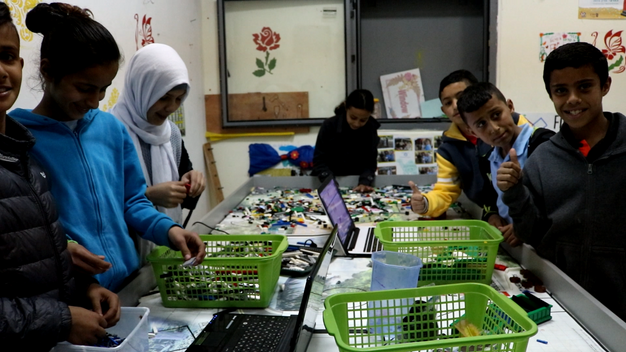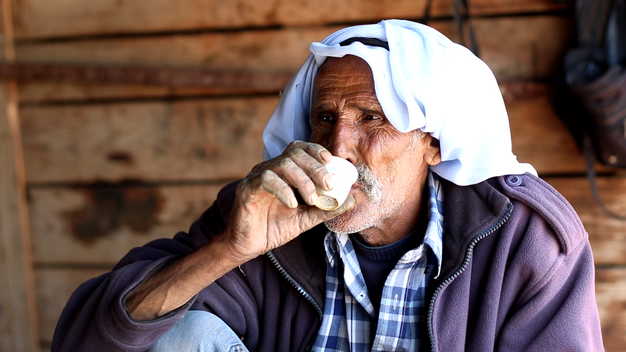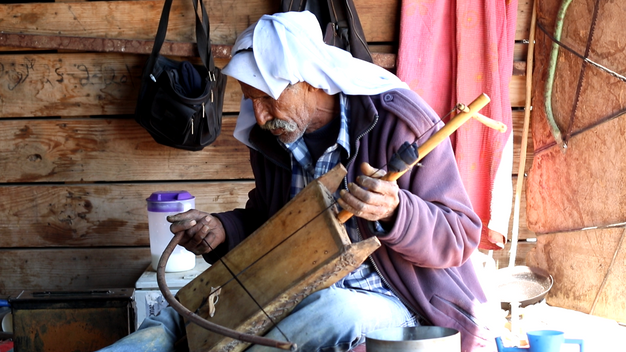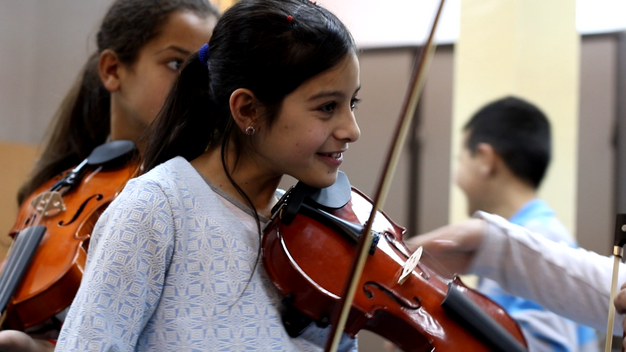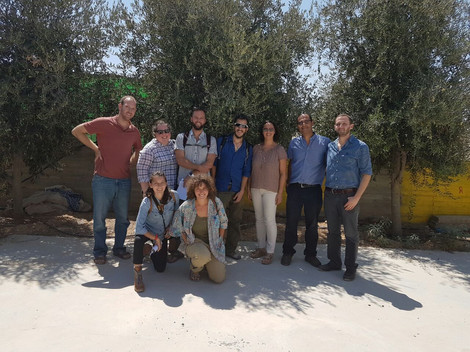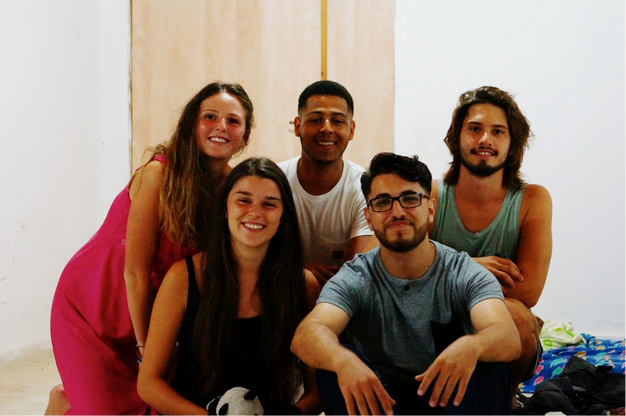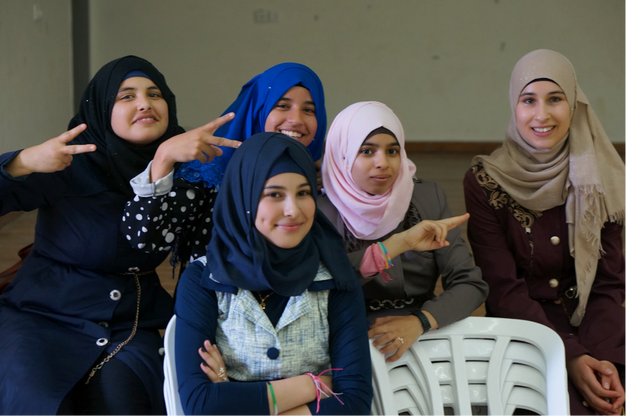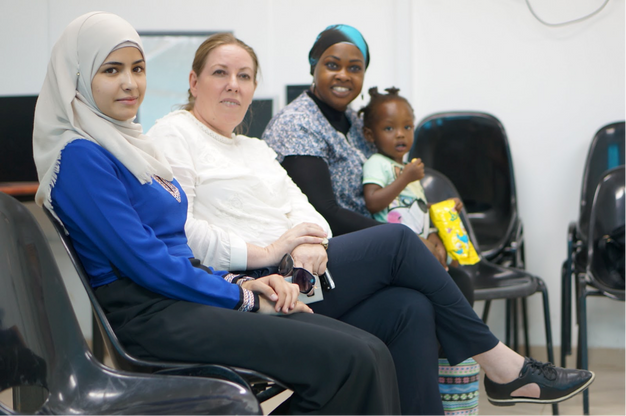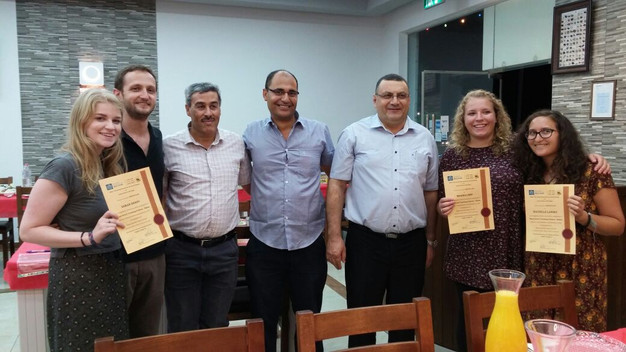The journey of Antoine, Emilie, Justine and Victor in Rahat
written and photographed by Antoine, Emilie, Justine and Victor
During the last four weeks we have experienced a completely different way of life from what we have been used to: the Bedouin way of life. We were living in Rahat and working at “A New Dawn for the Negev”, a non-governmental organization that seeks to promote dialogue through education. This opportunity has put us in contact with Bedouins and it allows us to discover their culture, habits, traditions, and challenges. At the same time, we were teaching English to kids, teenagers, and adults who were willing to improve their knowledge of English or discover more about other places in the world.
The classes with kids were an amazing experience seeing their everyday progress besides their joy while learning something new. The same happened with the teenagers, which already had a medium-level of English, and had the chance to improve their fluency and grammar skills. The daily exchange with them and their smile were the most valuable reward we could have.
At the end, our classes with adults instead of being a regular class ended up being a conversation where we could practice English but most important share our experiences, values, and ideas among each other. We made friends that have welcomed us and showed us the beautiful city of Rahat. It was amazing seeing how proud they are of their culture no matter what challenges they have to face, besides how they also question some of the traditional values today.
The most important lesson we are taking from this experience is the Bedouin solidarity and receptivity no matter how adverse is their situation. They have opened their city and houses showing us their traditions, food, music, parties and generosity, while we have opened our minds and hearts to get the most of this highly enriching experience. We are grateful and amazed for it.
These four weeks have been a life changing experience, allowing us to discover a new way of life, a new way of seeing the world, and even ourselves. We would warmly recommend everyone to volunteer for “A New Dawn for the Negev” as it is a genuine field-orientated non-governmental organization. We hope that our work here will contribute to the improvement of bedouin youth knowledge about the English language, the Western culture and the World.
Bedouin hospitality as a tradition
One of the first thing that agreeably struck us when we arrived was the bedouin sense of hospitality. We were kind of lost at the beginning but a few hours after our arrival, a guy that we just met decided to take us in his car and to show us around. He took us to unrecognized villages and we got invited in a tent where traditional bedouin guys served us tea and coffee, they played a traditional bedouin instrument for us and showed us how to make coffee from the original seeds. We had a great first day discovering Rahat, the different neighborhoods, the souk and its surrounding areas.
First and foremost, you have to honour and please your guests. That is the principle of Bedouin tradition we learnt during our journey in Rahat. Having been hosted by different families, at different places, for different occasions, we were delighted to be part of the Bedouin community of Rahat.
Invitations to the weddings
Men
Antoine & Victor have been invited to two different weddings. During these weddings they had the opportunity to see how bedouins celebrate happy events such as weddings. They had the opportunity to sit like real bedouins; tasting traditional tea and coffee, while watching the Dehya traditional dance. During these two weddings they have been invited to join the dance line and to clap their hands on the beautiful and attracting rhythm of Dehya.
Women
Emilie and Justine have been invited to the female part of a bedouin wedding. First of all we were delighted to be accepted in a wedding where we did not know anyone except a friend of the bride. We arrived around 9pm and directly had dinner. The dinner part of the wedding was very different from what we are used to in France. We could sit wherever we wanted, while in France the seats are decided in advance by the future wife and husband. Big plates were put on the table full of a delicious meal called … and after eating people left the table to go to seat around the dance floor. Its was very surprising for us because in our country the dinner is composed of several dishes and people stay around the table for at least three hours. Here the dinner continues around the dance floor where several plates or fruits, bakeries and desserts are served. We had the chance to be initiated to many typical bedouin dances and to a lot of typical songs. We were wearing typical bedouin dresses and learning the typical dances, so our friend decided to make enne on our hands so we would really look like typical bedouin girls, the only missing thing was an ability to practice the belly dance for what we were absolutely terrible. It was an amazing night and we are very grateful to the bedouin community that they opened their doors with so much kindness.
Invitations to dinners
Maklouba
When it comes to Bedouin food, we have had the opportunity to eat Maklouba twice. We discovered the great deliciousness of this meal, tasting the sweetness of the rice with the yoghurt balanced by the crispy aspect of the cold cucumbers and tomatoes, to which the melty chicken was added.
Volunteering at a New Dawn for the Negev
During our experience we had taught English to a great variety of students, namely kids, teenagers and adults.
Teaching English to the kids was the most challenging experience we had. From 9 to 12 AM it was often challenging to make the kids pay attention and to adapt our content to their current knowledge. Their smiles and laughs were the most precious rewards we had during these classes, when we opened our mind and our hearts to these lovely kids.
Teaching teenagers was a very interesting experience. We used to teach teenagers between 2 and 4 pm. While trying to orientate our classes to try to speak about subjects that they like, it was interesting to see the world with bedouin’s eyes.
Teaching the adults was a great experience. Benefiting from the most sophisticated level of English, the adults were able to discuss a broad range of subjects with us. For this particular class we would like to thank Elham for having brought her spirit and energy, making this class from 4 to 6 pm always a very special moment.
Even though teaching English was our principle task at A New Dawn for the Negev, it allowed us to be fully part of the community, to discover the Bedouin people, its culture, traditions, habits, norms and values. It could not have been possible to live so closely to the Bedouins if we have not had this outstanding and amazing experience. That is why we would like to express our gratefulness in this paragraph and take the opportunity to thank everyone who went to the New Dawn to listen to us and to talk with us, because without them this experience would not have been possible.
The different projects we were involved in
Al Salam school was the first summer camp our team of 4 volunteers was involved in. It was a very nice school, with lovely students and teachers who allowed us to spend a great time playing, dancing and having fun all together.
Justine and Emilie went to give classes in a school of Lakkya. The students were between 12 and 17 years old. They were mostly girls but we also had few boys. They were very welcoming, smart and creative. We had such a great time with them and already miss them a lot !
Justine and Emilie spent the 3rd week of the internship in Houra school. This time, the teenagers were older (between 15 and 17). They weren’t as motivated as the teenagers we had in Lakkya but we did our best to make this experience usefull for them.
In Segev Shalom Victor and Antoine contributed to organize an event aiming at hosting Houra’s students. During one day they contributed to prepare posters and speeches about the village of Segev Shalom. While helping the students to explain about their village and their lives in Segev Shalom, Victor and Antoine continued to learn a lot about the bedouin society.
With the students of Segev Shalom and Houra we spent a day in Tel Aviv. During the mornings, we visited Jaffa area. The only problem for us was that everything was in arabic, no explanation in English, but well, it was nice to walk in the charming streets and see the sea. During the afternoon, we did paddleboat on a lake. The weather was perfect for that!




